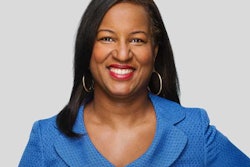ORLANDO, Fla. — Leadership positions at Football Bowl Subdivision schools continue to be dominated by white men, according to a diversity report released Wednesday.
The annual report card from The Institute for Diversity and Ethics in Sport gave top-level college sports an overall grade of D+ for race and gender hiring in leadership positions, with a D+ for racial hiring and an F for gender hiring.
“If these were the grades of a college student, they’d either be expelled or suspended,” said Richard Lapchick, the primary author of the report and director of the University of Central Florida-based institute.
“Neither (racial or gender) grade at the college level is where it should be, or even close,” he added.
The study examined the race and gender of top positions such as college and university presidents, athletic directors and faculty athletics representatives for the 130 schools in the FBS, as well as the racial composition of the football coaching staffs and rosters.
The results indicate little deviation from the findings in 2016, and show that when all leadership positions were combined, there were “minor increases” in the representation of women and people of color.
Lapchick said his primary takeaway was that lack of improvement, and has been a proponent of rules that would require teams to interview minorities and women for jobs. A poor hiring record led the NCAA in September 2016 to draft a pledge to promote diversity and gender equity in college sports. College presidents who signed it promised to identify, recruit and interview people from diverse backgrounds for leadership positions.
“From my point of view, the only way it’s going to change is to mandate a diverse hiring pool,” Lapchick said, adding that the NCAA “had a significant number of presidents and commissioners sign up for the pledge, but there’s no teeth to the pledge. And unless it becomes mandatory like the Rooney Rule is in the NFL or the Bud Selig rule in Major League Baseball where you have to have a diverse pool of candidates, I think it’s going to continue to have very slow progress.
“But if we mandate that we have women and people of color in the all the administrative openings — senior administrative openings — and for all coaching openings, and diverse pools of candidates as well then I think that’s when we’re going to begin to see the change as we saw in football and baseball,” he added.
Overall, Whites hold 86.6 percent of the 395 campus leadership positions reported in the study, slightly down from the 87.9 percent a year ago.
The study found that 89.2 percent of university presidents in the FBS were White, as were 83.1 percent of the athletic directors, 87.4 percent of faculty athletics representatives and 100 percent of the conference commissioners.
At the presidential level, the study gave FBS schools received Fs in both race and gender makeup, with a slight increase of women and a small decrease of people of color as presidents.
More than 72 percent of FBS university presidents are White men, with Ana Mari Cauce (Washington) and Renu Khator (Houston) the only female Latina and Asian presidents this year. Five African American men, two Latino men and five Asian men are FBS presidents.
Among athletic directors, the number of people of color increased enough for schools to earn a B- grade in racial makeup but they received an F for gender composition because of a decrease in representation of women. The study found that white men hold nearly 78 percent of the AD positions while 5.4 percent of those positions are held by White women and there were just 22 people of color in those roles. The number of African-American men will decrease by one while the number of African-American women will increase once Carla Williams takes over for the retiring Craig Littlepage as Virginia’s AD.
Also, increases in both categories among faculty athletics representatives led to grades of D+ in race and C in gender. More than 87 percent of the FARs were white — a decrease of 2 percentage points from 2016 — while only 31 percent were women and only four women of color are FARs.
The study also found that nearly 87 percent of head coaches in the FBS are White, a 0.6 percent decrease from last year, with 17 coaches of color. Among assistant coaches, 63.3 percent were White, a decrease of 2.8 percentage points from 2016. The number of Black assistants increased 3.4 percent to 482 total.
Additionally, nearly 56 percent of football players are Black — up 2.1 percent from last year — while 39 percent are White, a 2.2 percent decrease.















